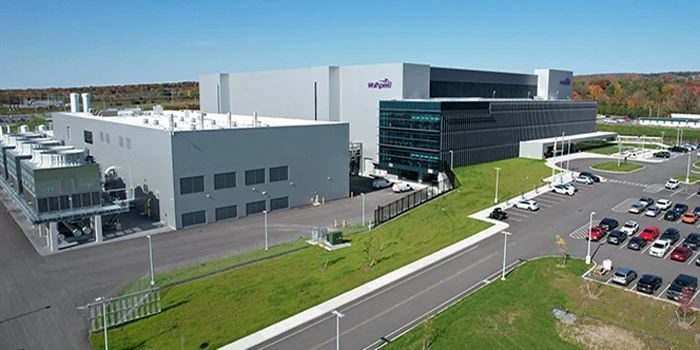United States Wolfspeed recently announced that it has decided to suspend plans to build an 8-inch SiC wafer fab in Germany due to slower-than-expected growth in the electric vehicle market. This decision not only has an impact on Wolfspeed's own global strategic layout, but may also bring new opportunities to manufacturers related to China's semiconductor industry chain. China Exportsemi will analyze one or two for readers and friends today.
1. Market demand adjustment and overcapacity risk
Wolfspeed's decision to suspend reflects the actual change in market demand for SiC semiconductors. According to market research, the SiC power device market is expected to jump by about 38% by 2025, although the growth rate is expected to be 18% in 2024. Wolfspeed said it already had enough capacity to support its customers' ramp-up plans, so it chose to shelve the construction of its Germany plant. This decision demonstrates the company's sensitivity and flexibility to market changes, as well as its cautious approach in the face of uncertainty.
2. Technical prospects and market challenges
SiC materials are widely used in new energy vehicles, 5G base stations, photovoltaics, rail transit and other fields due to their excellent performance in high-temperature, high-pressure, high-frequency and high-power environments. As the world's largest manufacturer of SiC substrates, Wolfspeed has more than 30 years of experience in silicon carbide production, and its technical strength and market position cannot be ignored. However, technological sophistication does not always translate directly into market demand. Against the backdrop of the current EV market not growing at the expected rate, Wolfspeed chose to suspend the construction of its Germany plant to avoid overinvestment and potential overcapacity risks.

Figure: Wolfspeed suspends SiC fab program in Germany
3. Opportunities in China's semiconductor industry chain
Wolfspeed's plan to suspend the construction of factories may be an opportunity for manufacturers related to China's semiconductor industry chain. The Chinese government is actively promoting the localization of semiconductor materials and encouraging local semiconductor material manufacturers to improve their technical level and R&D capabilities. China has become one of the world's largest semiconductor markets, and ranks second in the world in the semiconductor materials market, which provides a huge market space for Chinese semiconductor material manufacturers. In addition, China's semiconductor equipment market is also showing a rapid growth trend, which is expected to reach 274.515 billion yuan in 2022 and 313.6 billion yuan in 2023. This presents a growth opportunity for Chinese semiconductor equipment manufacturers.
Wolfspeed's suspension of the Germany fab plan may also provide an opportunity for Chinese semiconductor companies to enter the European market. The demand for high-performance, high-reliability semiconductors continues to grow in the European market, especially in the fields of automotive electronics, industrial control and renewable energy. In our view, Chinese semiconductor companies can seize this opportunity by:
Strengthen technological innovation: Through continuous technological research and development and innovation, we provide high-performance semiconductor products that meet the needs of the European market.
Implement localization strategy: Set up R&D center and sales network in Europe to provide localized services and enhance customer trust and satisfaction.
Expand partnerships: Establish cooperative relations with local European enterprises to jointly develop markets and share resources.
Enhance brand influence: Enhance brand awareness and influence by participating in international exhibitions, publishing white papers, etc.
Dealing with trade barriers: Pay close attention to changes in international trade policies, flexibly adjust overseas strategies, and deal with possible trade barriers.
In short, Wolfspeed's suspension of Germany fab plans provides Chinese semiconductor companies with opportunities to enter the European market, but also faces many challenges. Chinese semiconductor companies need to strengthen technological innovation, implement diversification and localization strategies, actively expand the European market through mergers and acquisitions and cooperation, and enhance their competitiveness and influence in the global semiconductor industry.
4. the competitive landscape and market concentration
Among global SiC power device manufacturers, Wolfspeed faces challenges from competitors such as STMicroelectronics, ON Semiconductor, and Infineon. These companies are rapidly gaining market share through huge investments and capacity expansion. While Wolfspeed's planned suspension may impact its global expansion strategy in the short term, it may be a strategic adjustment in the long term, allowing it to be more agile in responding to market changes while maintaining its leading position in SiC technology.
5. Future prospects
Wolfspeed's plan to suspend the construction of factories has had an impact on the road to the revival of the semiconductor industry in Germany and throughout Europe. However, this decision also provides an opportunity for other countries, especially those related to China's semiconductor industry chain. With the improvement of the global economic situation, the demand for China's electronic products driven by exports is expected to increase, and OEMs will accelerate the procurement and replenishment of integrated circuit product inventory. The market size of China's semiconductor industry is expected to continue to grow and is expected to reach $246.4 billion by 2029.
In conclusion, Wolfspeed's fab plan adjustment is an important reflection on its global strategy. Against the backdrop of changing market demands and the competitive landscape, Wolfspeed needed to constantly adjust its strategy to remain competitive in the global semiconductor industry. At the same time, this event also reminds the global semiconductor industry that it must remain sensitive to market dynamics and flexibly adjust production capacity and investment plans to meet possible challenges in the future. While there may be some difficulties in the short term, this adaptability and flexibility will help Wolfspeed and the semiconductor industry as a whole grow more robustly and sustainably in the long term. For manufacturers in China's semiconductor industry chain, this may be an opportunity to accelerate technological progress and expand market share.






